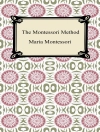Explores the particulars of minority-serving institutions while also highlighting their interconnectedness.
Understanding Minority-Serving Institutions explores these important institutions while also highlighting their interconnectedness, with the hope of sparking collaboration among the various types. Minority-serving institutions (MSIs) enroll and graduate the majority of students of color in the United States and traditionally include historically Black colleges and universities, Hispanic-serving institutions, tribal colleges, and more recently Asian American– and Pacific Islander–serving institutions. The book’s contributors focus on several issues, including institutional mission, faculty governance, student engagement, social justice, federal policy, and accreditation. They critically analyze the scholarship on MSIs, not only describing the existing research and stressing what is missing, but also providing new lines of thought for additional research.
表中的内容
List of Illustrations
Foreword (Walter R. Allen)
Acknowledgments
Part I. The Foundations of Minority-Serving Institutions
1. On Minority-Serving Institutions
Benjamin Baez, Marybeth Gasman, and Caroline Sotello Viernes Turner
2. Minority-Serving Institutions: A Historical Backdrop
Marybeth Gasman
3. Minority-Serving Institutions: Selected Institutional and Student Characteristics
Charmaine Jackson Mercer and James B. Stedman
4. Shall I Compare Thee? Reflections on Naming and Power
Philo A. Hutcheson
Part II. Context-Specific Trends and Challenges
5. Arguing for a Different View: Deaf-Serving Institutions as Minority-Serving
Noah D. Drezner
6. Hispanic-Serving Institutions: Closeted Identity and the Production of Equitable Outcomes for Latino/a Students
Frances E. Contreras, Lindsey E. Malcom, and Estela Mara Bensimon
7. Tribal Colleges and Universities: Identity, Invisibility, and Current Issues
Justin P. Guillory and Kelly Ward
8. Asian American and Pacific Islander Serving Institutions: Historical Perspectives and Future Prospects
Julie J. Park and Robert T. Teranishi
9. ¿Dónde Están Los Hombres?: Examining Success of Latino Male Students at Hispanic-Serving Community Colleges
Berta Vigil Laden, Linda Serra Hagedorn, and Athena Perrakis
10. Another Side of the Percent Plan Story: Latino Enrollment in the Hispanic-Serving Institutions Sector in California and Texas
Stella M. Flores and Otoniel Jiménez Morfín
11. Faculty Development at Historically Black Colleges and Universities: Current Priorities and Future Directions
Andrea L. Beach, Phyllis Worthy Dawkins, Stephen L. Rozman, and Jessie L. Grant
12. Groundwork for Studying Governance at Historically Black Colleges and Universities
James T. Minor
13. HBCU’s Institutional Advantage: Returns to Teacher Education
Brooks B. Robinson and Angela R. Albert
Part III. Interconnections and Common Issues
14. Social Justice at Historically Black and Hispanic-Serving Institutions: Mission Statements and Administrative Voices
Terrell L. Strayhorn and Joan B. Hirt
15. Student Engagement and Student Success at Historically Black and Hispanic-Serving Institutions
Brian K. Bridges, Jillian Kinzie, Thomas F. Nelson Laird, and George D. Kuh
16. Teaching Latino, African American, and Native American Undergraduates: Faculty Attitudes, Conditions, and Practices
Frances K. Stage and Steven Hubbard
17. Considering the Federal Classification of Hispanic-Serving Institutions and Historically Black Colleges and Universities
Michelle M. Espino and John J. Cheslock
18. Coalition Formation among Minority-Serving Institutions
Deirdre Martinez
19. The Adversity of Diversity: Regional Associations and the Accreditation of Minority-Serving Institutions
Saran Donahoo and Wynetta Y. Lee
List of Contributors
Index
关于作者
Marybeth Gasman is Assistant Professor of Higher Education at the University of Pennsylvania. Benjamin Baez is Associate Professor of Higher Education at Florida International University. Caroline Sotello Viernes Turner is Professor of Educational Leadership and Policy Studies and Lincoln Professor of Ethics and Education at Arizona State University.












